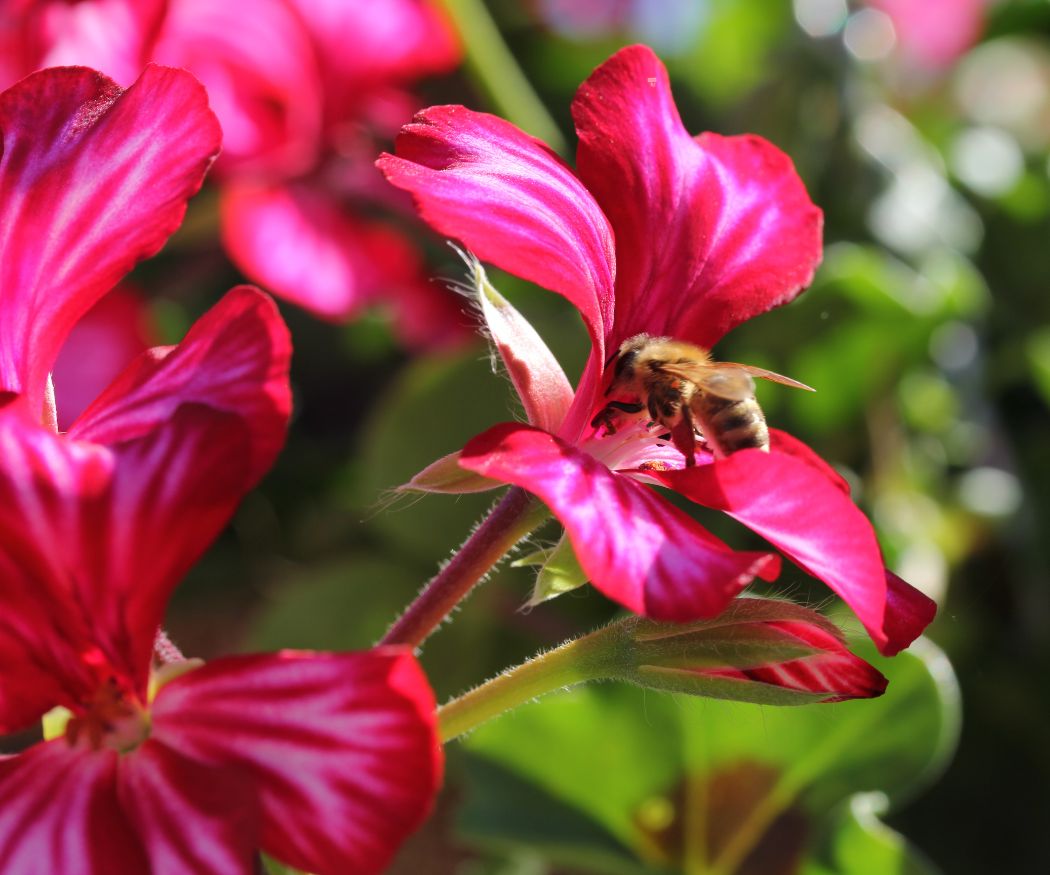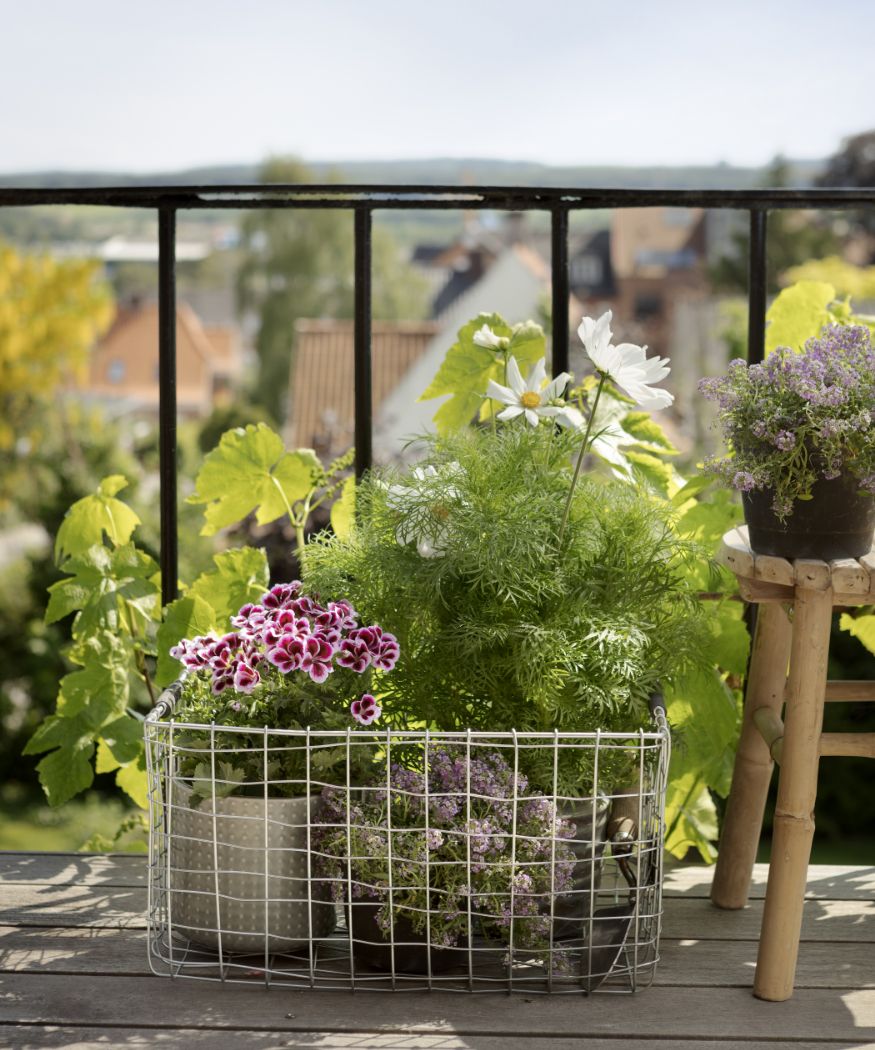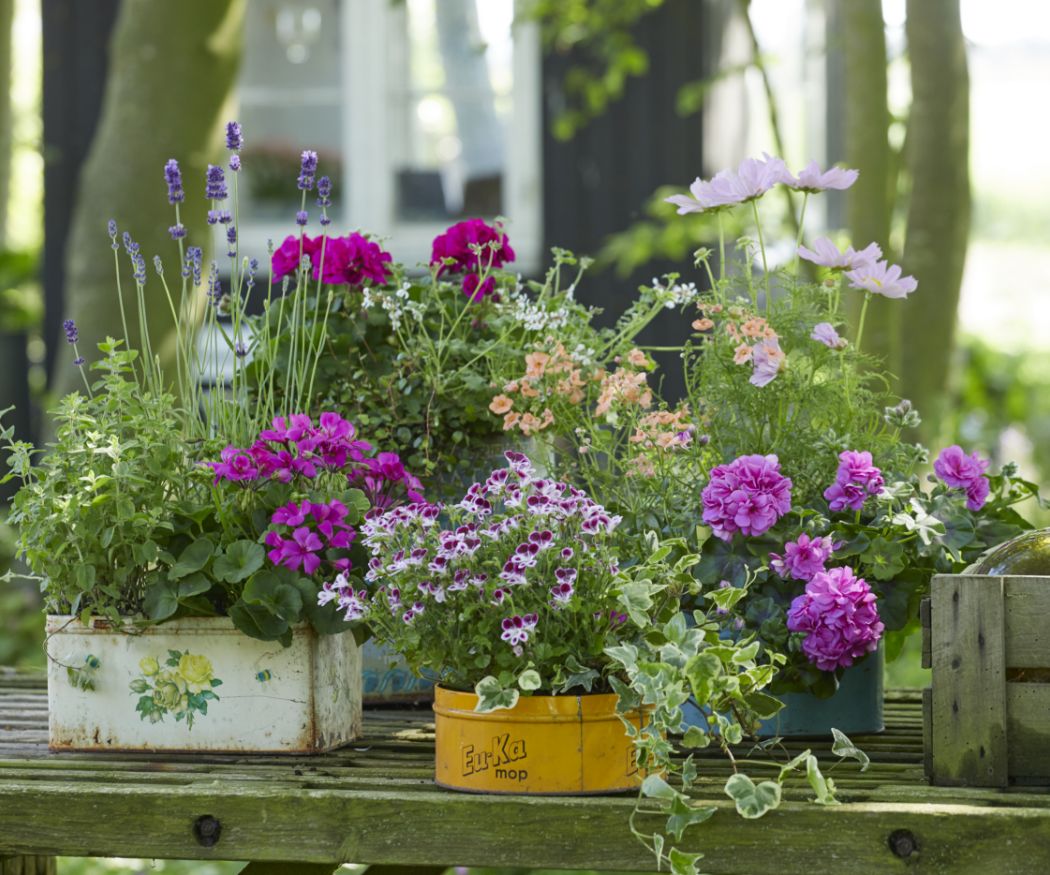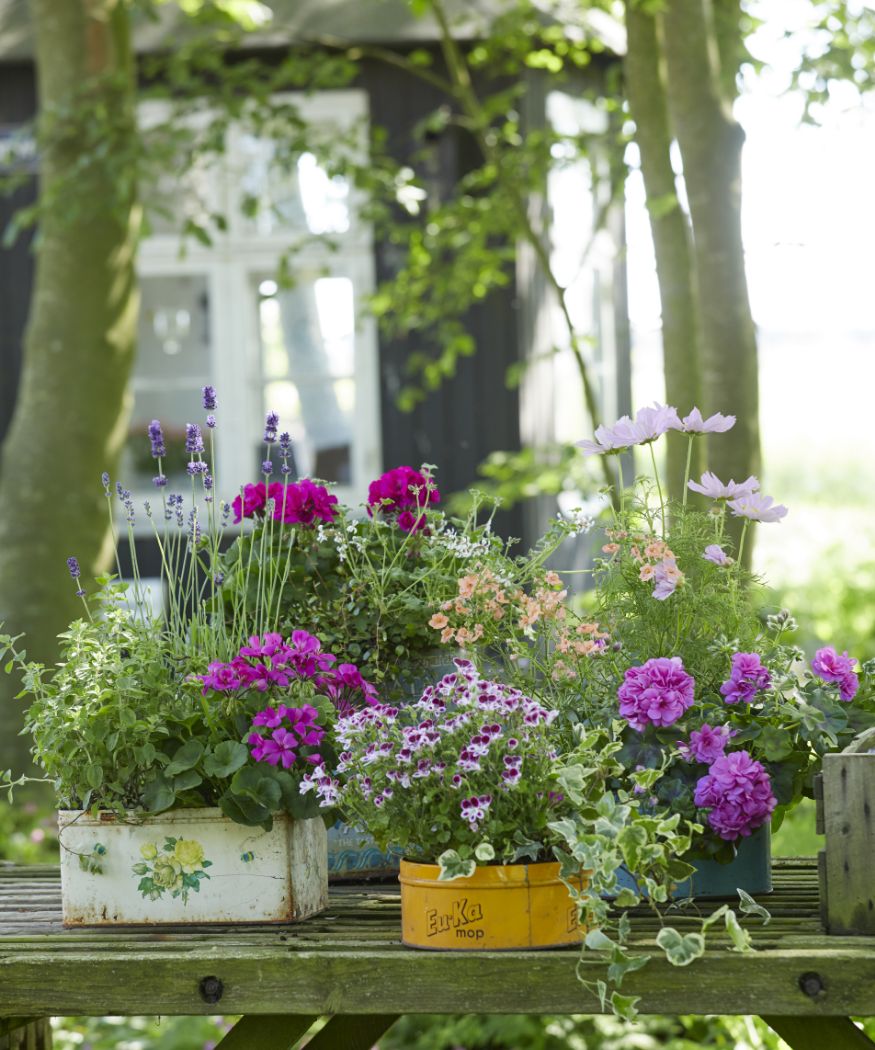The geranium is the queen among bedding and balcony plants. This beautiful South African has remarkable diversity and is easy-care and hardy. With their dazzling abundance of blooms, they transform terraces, balconies and gardens into a colourful sea of flowers from spring to autumn. Presumably it’s their widespread popularity that is responsible for the fact that geraniums have been receiving more attention of late. Regarding the decline of insect population, the geranium is often cited as a textbook example of a seemingly useless decorative plant that has nothing to offer the bees and butterflies. The experts from Pelargonium for Europe explain why that is not true, and why it isn’t necessary to live without geraniums.
Geraniums are not all the same
Geraniums are available in a wealth of colours and shapes and can have single, semi-double or double flowers. The numerous geranium varieties with single or semi-double blooms have much to offer the insect world. Their stamens contain pollen and some varieties also produce nectar. Although insects seem to prefer other flowering plants when there is a lot of choice in summer, as their food sources become scarcer toward the end of the season they are quite happy to head for blooming single and semi-double geraniums. The beautiful flowers of double geraniums, on the other hand, are meant to appeal to people, but don’t actually have nectar or pollen.

Geraniums in clever combinations
Even if geraniums with double flowers do not provide food for insects, their luminous colours and large flowers still attract such visitors from afar. But to make it worth the effort for them, double geraniums can be combined with other flowering plants and herbs. “You can help the insects without having to forego decorative geraniums”, Markus Radscheit MSc., Technical Director of Botanical Gardens of the University of Bonn also agrees. “To support insects and in particular bees on a balcony, it suffices to mix geraniums with other plants that are especially attractive to bees, for example lavender, daisies, cornflowers or lilies.” The only important thing is to choose plants that have similar habitat needs as the sun-loving geranium and make sure they are spaced at least 20 centimetres apart.
Garden centres and nurseries offer nearly endless possibilities for creating outdoor gardens that give both the insects and the gardener what they need.

So there is no reason to live without the diversified beauty and profuse blooming of the easy-care geranium.
A feast for the senses! This colourful composition of herbs, green plants and various summer flowers such as geraniums, cosmos and twinspur appeals to the eyes and nose alike. Even the bees and butterflies get their money’s worth.
Tip: Old biscuit tins make great planters. Repurposing them not only saves money and is environmentally friendly, it’s also right in line with the current shabby chic trend.
Important: Punching a few holes in the bottom allows excess water to drain off.
This summery flower arrangement will also appeal to the bees:
A bicolour geranium, alyssum and garden cosmos stand side-by-side in an old wire basket. Thanks to the varying growth heights, all three of these sun-loving flowers can flourish freely without having to out-compete one another for attention.
Geraniums with single or semi-double blooms have much to offer the insect world. Their stamens contain pollen and some varieties also produce nectar. When food sources become scarcer in late summer insects are quite happy to head to single and semi-double geraniums.

 English
English Dansk
Dansk Deutsch
Deutsch English
English Español
Español Français
Français Hrvatski
Hrvatski Italiano
Italiano Magyar
Magyar Nederlands
Nederlands Norsk
Norsk Polski
Polski Română
Română Slovenský
Slovenský Slovenščina
Slovenščina Suomalainen
Suomalainen Svenska
Svenska Česky
Česky Ελληνική
Ελληνική Български
Български